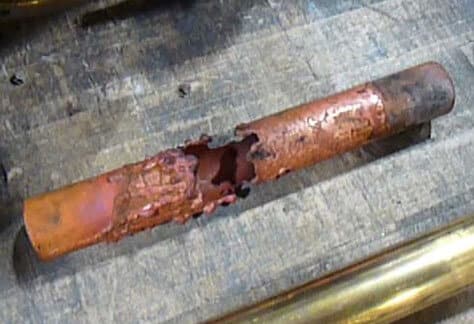RF components outside the transmitter, such as the transmission line and antenna are critical to the signal transmission chain, but they are very expensive to acquire, install and repair. Even though these RF components are robustly designed for unattended operation, problems can occur.
Transmission line and antenna monitoring has generally been dependent on reflected power or a VSWR circuit in the broadcast transmitter. While this approach can protect the transmitter to some extent, it cannot prevent all failures that may take place within the line and/or antenna components.
It’s therefore paramount for broadcasters to have access to new monitoring systems that are able to identify anomalies early, minimize downtime, prevent catastrophic damage and protect the operator’s investment.
Available Options
For many years, the only way to monitor and protect RF lines was from the transmitter by way of directional couplers and through the observation of reflected power. Alarm levels were set to protect the transmitter’s amplifying devices with almost no indication of degradation of individual RF components.
Because this method provides no indication of the presence of the multiple reflections along the line, by the time the transmitter protection activates, the damage has in most cases already occurred with no information on the location of the fault or the extent of damage.
To study the situation at hand, RF engineers and riggers must use a network analyzer to identify the source of the problem so they can then take corrective measures. The transmitter has to be shut down for this type of operation.
In general, all of these systems share a common limitation: They are reactive, thus it’s likely that significant degradation has already occurred before the monitoring system signals the problem.
Through real-time monitoring of all line components and the antenna system, the system localizes small VSWR changes and is able to identify when and where a potentially catastrophic arc has occurred. Within 20 centimeters of accuracy, the RFHawkeye monitors each connector or elbow in the line, identifying changes as low as 1.004:1 much earlier than for the standard VSWR.
In addition, users can set thresholds to generate warnings and alarms. The monitoring service then determines if corrective actions need to take place immediately, before the situation deteriorates, or whether inspection can wait.
The technology analyzes multiple transmission line failures, even when voltage breakdown is not due to arcing and is simply the consequence of other component deterioration. No matter the cause, all failures will show up as deterioration in VSWR before the catastrophic arcing actually occurs.
From Reactive to Proactive
In many cases, when the transmission line and other RF components are damaged, the transmitter itself is not. That’s why it’s important for a monitoring system to surveil the transmitter as well as the rest of the transmission chain. RFHawkeye provides advanced warning of problems that develop in these outside components, enabling early detection as well as determining the exact position of anomalies and providing time-saving information to perform repairs.
Users can integrate the system into the operator’s network as a monitoring service, allowing the view of system status and sending timely notifications of detrimental system condition to all key people. RFHawkeye shows the magnitude and location of VSWR changes. The change might be cyclical and of no concern because it’s due to physiological changes in environmental conditions, or it might be the first indication of, for instance, an insulator or bullet degradation. RFHawkeye technology warns the operator if there is a change, for example, from 1.006:1 to 1.011:1 at 760 feet (232 meters). Once technical staff is aware of any variations, they can track them and take the necessary corrective action before failure occurs.
Other concerns may include faulty installation of the transmission line, where perhaps one or more connectors are not assembled properly or are contaminated. If the issue is minor, normal system tests before operation may not detect this.
If that happens, when RF power is applied and the contamination or poor connection heats up, a potentially slow downward spiral of damage arising at the connector but progressing back toward the transmitter may occur.
Advanced RF monitoring technology will capture even minor VSWR changes at the connector and issue a warning and eventually an alarm before the connector is fully deteriorated or arcing has occurred. As mentioned above, with this type of a scenario, traditional transmission monitoring systems would most likely not react immediately at the onset of the issue, potentially resulting in catastrophic and extensive damage to the line.
The key for broadcasters is to transition broadcast transmission monitoring from a reactive mode to a proactive mode. This will provide better protection of the entire transmission chain, and increase overall site reliability and safety, thus reducing maintenance and/or repair costs along with reducing downtime.
The author is CTO of DAC System.

